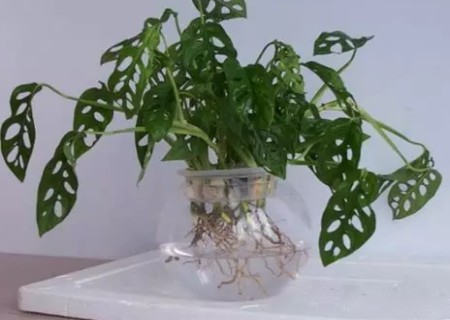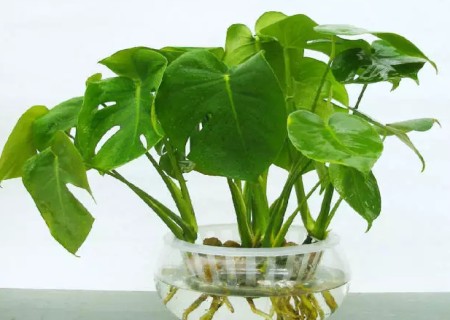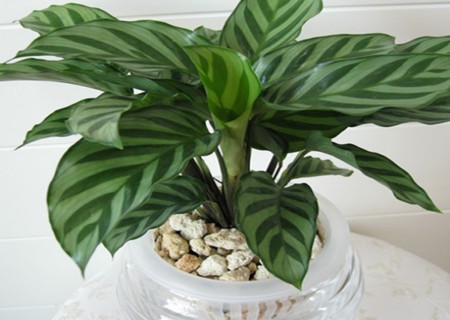Methods and points for attention of hydroponic culture of tortoise-backed bamboo
Tortoise back bamboo can be cultivated not only in soil, but also in hydroponics, and it will grow well in hydroponic environment as long as it is properly maintained. In addition to the root system can absorb oxygen in the water, because its stems and leaves are also covered with aerial roots, so it can also absorb oxygen from the air.

So, how can the turtle-backed bamboo cultivated in soil be changed into aquaculture? In fact, as long as the conditions are met, this is entirely possible. First of all, take the plant out of the flowerpot, wash the soil from the root system, and then plant it in water at room temperature. Of course, we can also intercept branches from soil-grown trees and propagate them with water, which can also achieve the goal of viewing leaves and roots.
The following are the methods / steps of hydroponics of Phyllostachys pubescens:
1. Container preparation
Choose a container of moderate size, there are certain requirements in the choice of container, it is recommended to use a thick and stable container to cultivate tortoise back bamboo, so that the container will not be dumped because the branches and leaves of the plant grow too vigorously.
2. Container water injection
After selecting the container, the next step is to inject the right amount of water into the container. Because clear water is relatively clean and more conducive to plant growth, if tap water is used for cultivation, it is recommended to leave it for 1-2 days before use, which will be safer.
3. Cutting cuttings
Some branches were cut from the mature tree of Phyllostachys pubescens as cuttings, but the branches with buds and aerial roots were selected as cuttings, which is a prerequisite to ensure the root germination of the plant.
4. Hydroponic cuttage
Insert the cut cuttings into a container filled with an appropriate amount of water, and if everything is normal, it is recommended to change the water once a week until a large amount of water grows at the base of the cuttings, indicating that our hydroponic process has been successful.
5. Maintenance and management
After the young plants return to normal growth and stability, it is necessary to replace the clear water in the container with a prepared nutrient solution. Then put it in a place where astigmatism can be received for maintenance and management. The temperature of hydroponic culture in summer should be lower than 28 ℃, so it is necessary to do a good job in cooling and moisturizing measures, while in winter, due to the low temperature, it is necessary to take good measures to avoid cold wind blowing.
Note:
1. The depth of the nutrient solution in the container should not exceed half of the height of the root system to ensure that the upper part of the root system can absorb oxygen from the air.
2. Shading and cooling measures should be taken in summer, and warmth and light reception should be ensured in winter.
3. Often shake the container to make the oxygen dissolve in the nutrient solution, so as to increase the oxygen content in the nutrient solution.
4. Try to change the nutrient solution every day in summer and once a week in winter.
5. Ammonium nitrogen can not be dissolved in the nutrient solution, and it is necessary to keep the PH value of the nutrient solution between 6 and 7.
Time: 2019-06-08 Click:
- Prev

How to prune Phyllostachys pubescens in water
In the previous articles, the editor talked to you about articles on related topics of potted turtles and bamboos. In fact, the ramet in northern Guangxi is also very adapted to hydroponic cultivation, and we can change the soil-cultivated tortoise-backed bamboo to hydroponic culture by washing its roots. Except for this method, of course.
- Next

Can peacock arrowroot be cultured? -Peacock arrowroot culture method
Peacock arrowroot is a typical indoor leaf-viewing green plant, which is beautiful and charming when it is potted, and is highly sought after by flower lovers. In the article introduced in the previous small series, peacock arrowroot is mostly displayed in front of everyone in the form of soil planting. So, can peacock arrowroot be cultured in water? In fact, except for the soil.
Related
- Fuxing push coffee new agricultural production and marketing class: lack of small-scale processing plants
- Jujube rice field leisure farm deep ploughing Yilan for five years to create a space for organic food and play
- Nongyu Farm-A trial of organic papaya for brave women with advanced technology
- Four points for attention in the prevention and control of diseases and insect pests of edible fungi
- How to add nutrient solution to Edible Fungi
- Is there any good way to control edible fungus mites?
- Open Inoculation Technology of Edible Fungi
- Is there any clever way to use fertilizer for edible fungus in winter?
- What agents are used to kill the pathogens of edible fungi in the mushroom shed?
- Rapid drying of Edible Fungi

